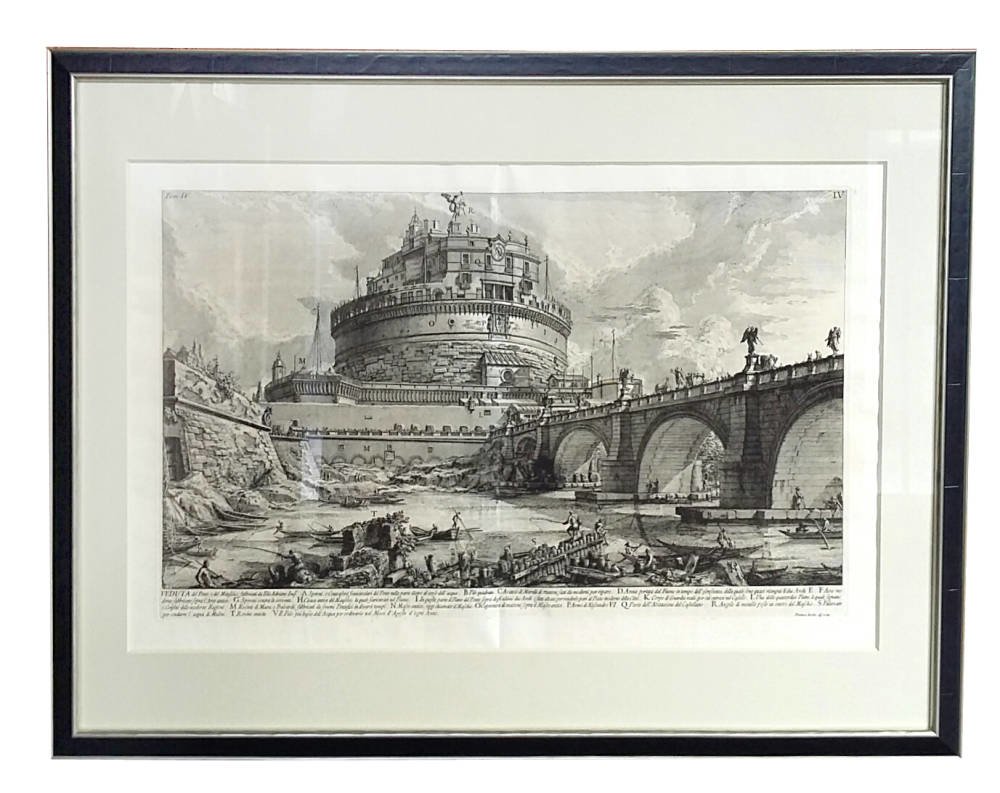

They were published in books and sets (of various titles, not just Vedute di Roma) as well separately issued – in various printing states – from about the 1740s. After Giovanni Battista Piranesi’s death in 1778, Francesco and another son, Pietro, continued to republish Piranesi prints and sell antiquities.ĭetermining the date of printing of the 135 etchings from the Vedute is exceedingly complicated for many reasons. The British were particularly good customers, so he set up his workshop and showrooms close to the British quarter of Rome.

Piranesi’s interest in these objects went well beyond historical restoration and marketing - he also advocated emulating the creativity of the Roman designers and integrating motifs from Greek and Roman antiquities with a contemporary sensibility to produce new and strikingly original works. From the 1760s onward, Piranesi supplemented his printing business by joining the thriving trade in the restoration and sale antiquities to Grand Tour travelers. Among those influenced by Piranesi was the great British architect Robert Adam (1728-92), who was a colleague of Piranesi while in Rome on the Grand Tour in the 1750s. They were sold as souvenirs to English aristocrats on the Grand Tour in Italy or by subscription directly to British patrons. Piranesi etched and published numerous folio print sets of art, architecture and archaeology of Rome and environs, that served as source material for other architects and designers.

Although Piranesi composed and etched many of his works, his son Francesco (1758-1810) and studio assistants such as Vincenzo Dolcibene also etched a significant number of the prints, especially in later years. According to scholar John Wilton-Ely, the distinguishing characteristics of Piranesi’s early works were “the unorthodox combination of classical motifs, the manipulation of superhuman scale, the organization of powerfully receding perspectives upon diagonal axes, and the modulation of space by means of skilful lighting.” Piranesi’s work was recognized with his election as a Fellow of the Society of Antiquaries in England in 1757. Many consider him one of the most influential artists in the development and popularization of the neoclassical style of the late 18th century. He was at once an artist, architect, archeologist, designer, collector, and print and antiquities dealer. Piranesi was a multi-talented and accomplished man of the enlightenment who combined supreme artistic ability and historical scholarship with an entrepreneurial business sense. Through these particular works, which were spread all over the Continent by means of the Grand Tour, Piranesi was not only to revolutionize the convention form of the veduta but was to transform the European vision of classical antiquity. The 135 plates of the Vedute di Roma, produced individually by Piranesi from the late 1740s until his death some thirty years later, represent almost every phase in his stylistic evolution and reflect his changing intellectual concerns. State IV includes either the First Paris Edition, or Intermediate Paris Editions. Hind’s definitive catalog of Piranesi’s Vedute, this is the Hind State IV, with the address of publication added lower margin, but with the price as added by State III now erased. These include an elaborate Baroque vessel on a pediment and a fountain spouting water into an overflowing pool. Title page of Vedute di Roma, with the title letters of the collection on a trompe l’oeil antique Roman stone tablet set at an angle behind a landscape vignette with garden follies decorated with Roman motifs. Vedute di Roma Disegnate ed Incise da Giambattista Piranesi Architetto Venezianoįrancesco and Pietro Piranesi, First Paris Edition, c.


 0 kommentar(er)
0 kommentar(er)
